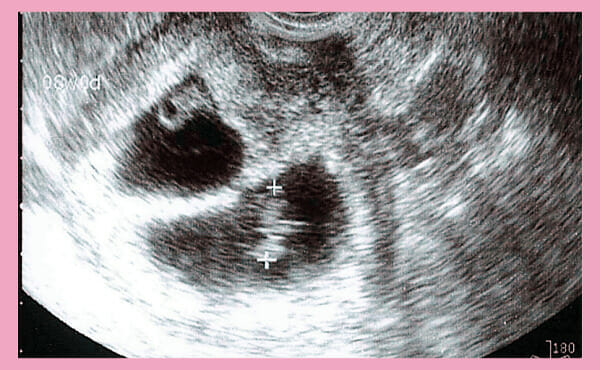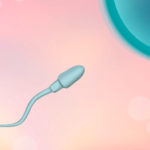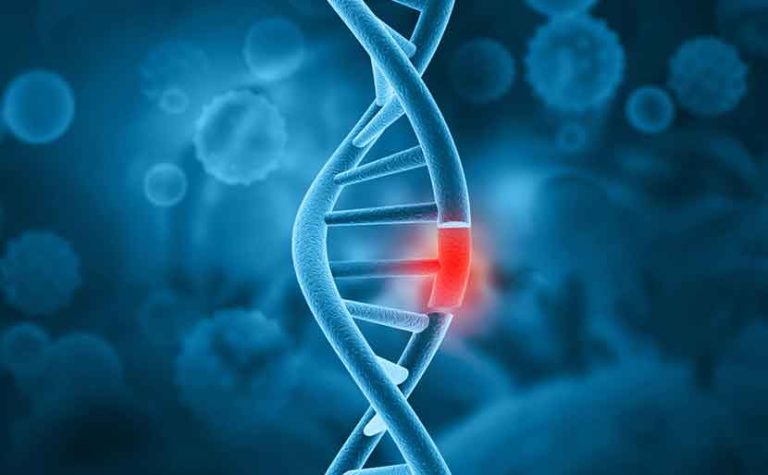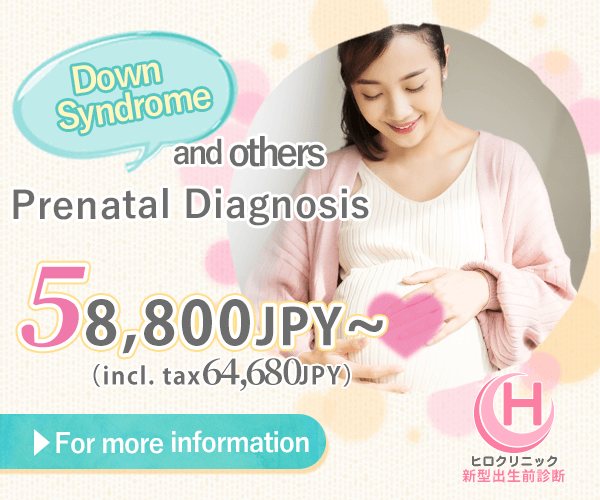Summary of this article
The phenomenon of one twin disappearing from the belly is called vanishing twin. Most cases occur in the first 6-8 weeks of pregnancy, and it is reported to occur in about 10-15% of twin pregnancies (pregnancies with two fetuses). Vanishing twins often occur early in pregnancy, and the probability of the remaining fetus being affected is not very high. Identical twins may be affected.
- What is vanishing twin?
- What causes vanishing twins?
- How to prevent or deal with vanishing twins?
- When does the vanishing twin occur?
- How likely is a vanishing twin to occur?
- Impact of Vanishing Twin
- Vanishing twins can remain in the body.
- Can NIPT (new prenatal diagnosis) be done with vanishing twin?
- What to expect when undergoing NIPT (new prenatal diagnosis) at Vanishing Twin
- I’d rather take care of my remaining child than blame myself.
Have you ever heard of the term “vanishing twins?”
Many people are happy to have twins, but are shocked when their doctors tell them that they may have vanishing twins.
What in the world is going on?” “Will my baby be okay? Will my baby be okay? Many people may be anxious.
What exactly is a vanishing twin, how likely is it to happen, and why?
Knowing this in advance may help you prepare yourself.
In addition, we will introduce some of the concerns about vanishing twins, including the effects on the fetus and the mother, and what to expect when undergoing NIPT (new-type prenatal diagnosis).
What is vanishing twin?
The phenomenon of one twin disappearing from the belly is called “vanishing twin.
Most cases occur in the early stages of twin pregnancy, and the name is derived from the fact that it appears as if “one of the deceased twins (twin) has vanished (vanishing).
At first glance, this seems like a strange phenomenon,It only appears to disappear when the fetus that died early in pregnancy is absorbed into the uterus.
In pregnancies with a single fetus, early miscarriages (death in the belly) are usually spontaneous expulsions.
When spontaneous evacuation is difficult, uterine content removal may be performed, but this is not an aggressive procedure because of the risk of damaging the endometrium.
In twin pregnancies, when one fetus dies, it may not be expelled but absorbed into the mother’s uterus.
This is what the vanishing twin is.
The medical term for this condition is “twin-unit death,” which indicates that one of the twins has died (miscarriage).
The Vanishing Twin is not an occult supernatural phenomenon, but it remains unusual.
Although medical developments have gradually clarified this phenomenon, there are still many unknowns.
What causes vanishing twins?
Vanishing twinning, also known as “twin-unit death,” occurs when one of the twins dies, but the mechanism by which the fetus is absorbed is not known.
However, miscarriages in early pregnancy, not just twins, are not uncommon. The most common cause is “chromosomal abnormalities” in the fetus.
Miscarriages that cause vanishing twins are also thought to be often caused by fetal chromosomal abnormalities.
How to prevent or deal with vanishing twins?
If you know that a vanishing twin may happen to you, you may want to do something to protect your precious child.
However, there is no effective way to prevent vanishing twins, and the only way is to accept them.
Preventing miscarriages in early pregnancy is important to prevent vanishing twins, but we still do not know how fetal chromosomal abnormalities, the main cause of these twins, occur.
Unless the cause of the chromosomal abnormality is known, there is nothing that can be done.
Most miscarriages in early pregnancy are caused by the fetus and can happen to anyone.
Some mothers blame themselves, but emotional stress and shock are also said to cause miscarriage.
Change your mind as soon as possible for the sake of the other fetus growing in your belly.
Please take care of yourself and try to live your life in a way that reduces the risk of miscarriage as much as possible by avoiding drinking, smoking, and taking medications.

When does the vanishing twin occur?
Most vanishing twins occur early in pregnancy, between 6 and 8 weeks.
By that time, a heartbeat can be seen in most fetuses, but the heartbeat of the vanishing twin gets smaller and smaller and finally stops.
It must be a heartbreaking thought to not be able to hear the heartbeat that was audible at the time of the last examination.
It may be better to tell others that you are expecting twins after the eighth week.
There is also a risk of miscarriage even after the eighth week of pregnancy, although the incidence of vanishing twins is lower.
You never know what will happen until you have a safe delivery.
Do not let up until the very end, and continue your pregnancy fully prepared.
How likely is a vanishing twin to occur?
Vanishing twins are reported to occur in approximately 10-15% of twin pregnancies (pregnancies with two fetuses).
The probability of a twin pregnancy is about 1%, so simply put, the probability of a vanishing twin is about 0.15% of the total.
Although 15 in 10,000 does not seem like a lot, the majority of vanishing twins go undetected without early ultrasound (echocardiography).
It is quite possible that a person who realizes that she is pregnant late may think she has a singleton pregnancy (a pregnancy with one fetus) from the beginning, after the vanishing twin has occurred at the time of the initial examination.
In fact, some studies report that vanishing twins occur in more than 30% of twin pregnancies, and with triplets, the rate is even higher.
In recent years, infertility treatment has become more common and IVF has increased.
Because IVF increases the likelihood of multiple births (two or more fetuses), the probability of a vanishing twin also increases.
It is only a probability, but it is not surprising if it is happening close to you just because you don’t know about it.
You should be fully aware and prepared for the possibility of a vanishing twin, especially if you are pregnant with twins.
The odds are different for monozygotic and dizygotic
The frequency of vanishing twins varies with the type of twin pregnancy, with monozygotic having a higher rate of occurrence than dizygotic.
This is related to the number of chorionic and amniotic membranes, and vanishing twins are more likely to occur in “one chorionic and one amniotic membrane” or “one chorionic and two amniotic membranes.
What are the types of twin pregnancies?
Twin pregnancies are classified into three types depending on the number of membranes surrounding the fetus.
- One chorion, one amnion (one amnion in one chorion)
- One chorion, two amnion (two amnion membranes in one chorion)
- Bichorionic bilaminar (one amnion in each of the two chorionic membranes)
It is easier to understand if we think of the number of chorionic villi as the number of placentas and the number of amnionic membranes as the number of chambers in which the fetus grows.
The fetus grows on nutrients delivered to the placenta, so there is basically one placenta per fetus.
In fraternal twins, the twins will almost certainly have C bichorionic biamniotic membranes, and each of the two fetuses will have one placenta, making it easier for them to grow up evenly.
However, identical twins can be either A or C, depending on when the fertilized egg splits in two.
Vanishing twins are less likely to occur in monozygotic twins if they are C bichorionic bilaminar.
However, with A and B, one placenta is shared by both fetuses, and nutrition must be shared between them.
In this case, an imbalance in nutrient supply is likely to occur.
It is not uncommon for one fetus to fail to thrive and die as a result of unbalanced nutrition.
Furthermore, in Type A, which has only one amnion, two fetuses are placed in the same room, increasing the risk of miscarriage due to “umbilical cord entanglement” or excessive amniotic fluid supply.
Bichorionic dichorionic amnion (C) accounts for the largest percentage of all twin pregnancies at 70-75%, followed by monochorionic dichorionic amnion (B) at 25-30%, and monochorionic monoamnion (A) at less than 1%.
As noted above, the risk of twin pregnancies depends on the number of chorionic and amniotic membranes. Early ultrasound examination is important because it can be difficult to diagnose membranous after 14 weeks of gestation.

This image shows an 8-week echo photo of the twins.
Impact of Vanishing Twin
We have no choice but to accept the vanishing twin, but I am concerned about the effects on the remaining fetus and the mother.
Although the fetus disappears, it does not necessarily mean that nothing will be affected.
In conclusion, if it happened early in pregnancy, there is nothing to worry about.
Absorption of the fetus into the uterus does not affect the mother, and the surviving fetus grows up intact.
After the second trimester of pregnancy, it may not be completely absorbed. However, bichorionic biamniotic membranes have little effect on the remaining fetus.
However, in the case of one-chorionic or one-chorionic-bilobed amniotic membrane, the remaining fetus may be affected.
They may be born with low birth weight, suffer brain damage, or in the worst case, die.
However, vanishing twins often occur early in pregnancy, and the probability of affecting the remaining fetus is not very high.
Even if problems do arise, there is no need to be too pessimistic, as they will be dealt with immediately if the risks are understood.
Just keep in mind that identical twins may be affected.
Vanishing twins can remain in the body.
In a normal vanishing twin, the deceased fetus is lost as it is absorbed into the uterus.
It was thought to be a mysterious phenomenon because even traces of the fetus disappear, but in very rare cases, traces of the deceased fetus remain.
Fingers, teeth, and other body parts are not absorbed and lodge into the remaining fetal body.
Several cases have been reported of an extremely rare phenomenon known as “parasitic twins.”
Parasitic twins case (1)
A 15-year-old boy from Sungai Ptani, Kedah, Malaysia, was rushed to the hospital due to severe abdominal pain.
The abdominal pain was caused by a “foreign body” and surgery was performed to remove it, but when it was removed, it was a grown human part.
The parasitic twins, with hair, head, limbs, and even genitalia present, took everyone involved by surprise.
Since the boy usually had a big appetite, it is thought that the nutrients he ate may have flowed not only to him but also to his parasitic twin, which then grew up with him.
Parasitic twins case 2)
In 2016, a woman in Uttar Pradesh, India, suffering from abdominal pain identified a parasitic twin with a total weight of about 2.5 kg that left not only hair and teeth but also bones.
A case of parasitic twins (iii)
There is also a record of a baby born in Hong Kong in 2010 that had twins inside her body.
The removal surgery, performed at three weeks of age, revealed the umbilical cord, limbs, skin, rib cage, bones, intestines, and brain tissue.
This phenomenon of “a part of the vanishing twin being lodged in the remaining fetus” is said to occur in about 1 in 500,000 newborns.
In Japan, about 800,000 to 900,000 children are born each year, which means that, by simple calculation, one or two children a year are born with traces of vanishing twins in their bodies.
Considering that this phenomenon occurs all over the world, parasitic twins may be a more familiar phenomenon than one might think.

Microchimerism baby, one of the rarest in the world
Traces caused by vanishing twins are not limited to parasitic twins.
The genetic information of a deceased fetus may be passed on.
In 2014, a Washington family had a healthy baby.
The couple must have been very happy with the birth of their new life.
However, blood tests changed the situation.
The baby was born with a blood type that could not have come from both parents.
Since the couple had conceived through artificial insemination, they suspected that there might have been a mistake in fertilization and checked with the hospital.
I have checked and found no problem and am baffled as to the cause.
So the couple consulted Dr. Barry Starr, a geneticist affiliated with Stanford University, to determine the cause.
Dr. Krishnamoorthy conducted genetic testing, and the results definitely indicated that they were parent and child.
In response to this, Dr. Kato predicted that it might be a microchimerism.
Microchimerism is a special type of genetic information that has two or more sets of DNA.
Children are originally born with one set of DNA each from the father and mother, but in microchimerism they also possess DNA separate from that of the couple.
In other words, they possessed three sets of DNA, which was thought to be the reason for the different blood types.
So where did the third set of DNA come from?
Investigation revealed that the babies were originally twins, and one fetus had disappeared due to vanishing twins.
The DNA of the deceased fetus was absorbed by the remaining fetus.
In addition to this baby, there have been several other cases in which DNA testing has shown no parent-child relationship because of microchimerism (chimeric genes).
Whether it is parasitic twins or microchimerism, vanishing twins sometimes cause strange phenomena far beyond human imagination.
Can NIPT (new prenatal diagnosis) be done with vanishing twin?
Basically, anyone who has experienced vanishing twins can undergo NIPT (new prenatal diagnosis), but not all hospitals and clinics offer it.
It is a good idea to first check if the vanishing twin can be tested, and to ask an experienced physician as much as possible.
The mechanism of vanishing twins is unknown, but it occurs with miscarriage in early pregnancy.
If many of these miscarriages are caused by chromosomal abnormalities in the fetus, it is natural to be concerned about whether the remaining fetus has any abnormalities.
NIPT (new prenatal diagnosis) is a new type of prenatal diagnosis that can be performed from the 10th week of pregnancy and can determine the possibility of various chromosomal diseases.
At HIRO Clinic, NIPT can be performed immediately after the fetal heartbeat is confirmed by echocardiography.
It is recommended because the test can be performed with only a blood sample from the mother.
Amniotic fluid and chorionic villus tests are required for a definitive diagnosis, but a negative result in NIPT (new prenatal diagnosis) is almost always a good sign.
What to expect when undergoing NIPT (new prenatal diagnosis) at Vanishing Twin
The fact that there was another fetus in the vanishing twin may affect the results of the NIPT (new prenatal diagnosis).
In understanding the test results, please note the following
Monozygosity does not affect test results.
When vanishing twins occur in identical twins, the DNA of the deceased fetus and the remaining fetus is exactly the same.
Since NIPT (new prenatal diagnosis) collects and analyzes pieces of fetal DNA present in the mother’s blood, the monozygotic vanishing twin is not expected to affect the results of NIPT (new prenatal diagnosis).
Beware of “false positives” in hermaphroditism.
In hermaphroditism, the DNA of the fetus is different, and the vanishing twin affects the results of NIPT (new prenatal diagnosis).
This means that the likelihood of false positives, false negatives, and gender discrepancies is higher than in a normal singleton pregnancy.
However, if the result is “negative,” then there is “no possibility of chromosomal disease” in either the deceased fetus or the remaining fetus.
What is difficult to interpret is when the result is “positive”.
Even if there is no abnormality in the remaining fetus, DNA from the deceased fetus may still test positive.
In other words, it is important to confirm the results with an amniotic fluid test, as there is a good chance of a false positive.
I’d rather take care of my remaining child than blame myself.
Vanishing twins are experienced by more than one in ten twin pregnancies.
Although not uncommon, it is still a shocking event for anyone to lose a life that has been given to them.
However, the cause of vanishing twins is unknown, and current medical care makes it difficult to prevent them.
So please don’t blame yourself, saying, “If only I had done this then….
You may not be able to get your feelings out of your head right away, but nothing good can come from dwelling on self-doubt.
If a vanishing twin happens, all the mother can do is take care of the other remaining fetus.
We look at the fetus that is still growing inside our body and give twice as much love to that child.
Let’s love our children who are left behind for those of our own children who have disappeared with the Vanishing Twin.
[References]
- NPO SIDS Family Association – Stillbirths
- National Center for Child Health and Development outside a multiple pregnancy
- livedoor NEWS – Malaysian boy’s abdomen reveals one of the twins who did not survive
- excite.news -. A world first! An “unknown child” was born even though she did not have an affair..! A story about genes that is too scary
Article Editorial Supervisor

Dr. Kunihiko Shiraogawa
Head Doctor of Hiro Clinic NIPT Nagoya
Certified Obstetrician and Gynecologist, Japan Society of Obstetrics and Gynecology
As an obstetrician/gynecologist with nearly 40 years of extensive experience, he has worked with many pregnant women.
Currently, as the head doctor of Hiro Clinic NIPT Nagoya , he is in charge of NIPT testing, and also provides consultations to pregnant women online at all Hiro Clinic NIPT clinics in Japan.
Brief History
1982 – Aichi Medical University Hospital
1987 – OB/GYN, Kagoshima University Hospital
1993 – Head Doctor, Shiranogawa Clinic
2011 – Kaba Memorial Hospital
2019 – Okamoto Ishii Hospital
2020 – Head Director, Hiro Clinic NIPT Nagoya






















